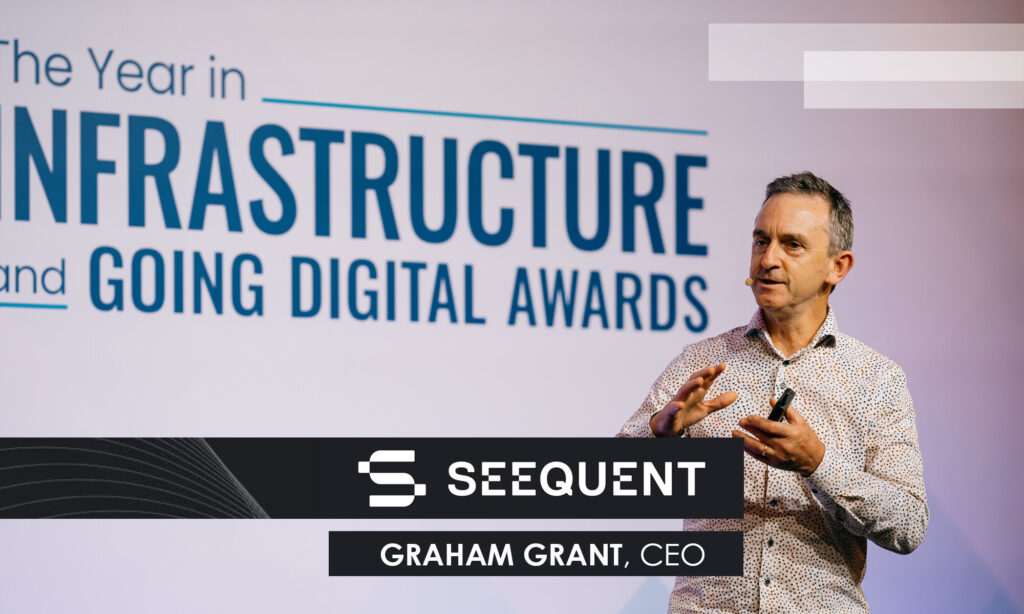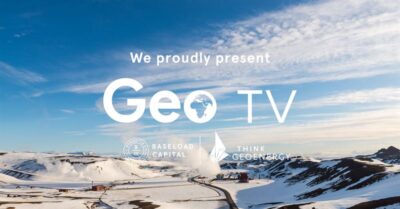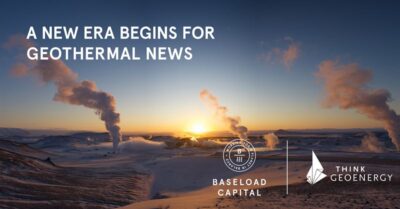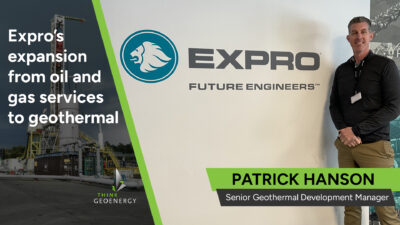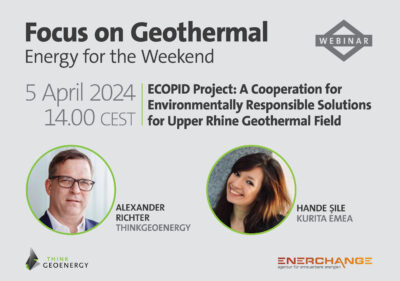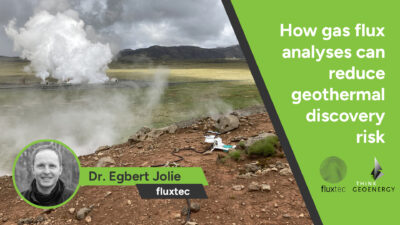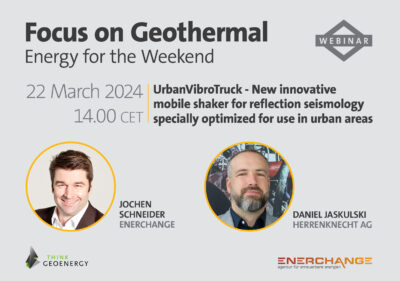Interview – Seequent and helping the geothermal sector to “go digital”
What are the opportunities for geothermal companies to "go digital?" We discuss this and more with Graham Grant, CEO of subsurface software specialist Seequent.
In October 2023, infrastructure engineering software company Bentley Systems held the 2023 Going Digital Awards in Infrastructure in Singapore. The event recognizes the exceptional work of Bentley software users advancing infrastructure design, construction, and operations throughout the world.
As the Bentley Subsurface Company, Seequent was featured prominently in many of the finalist projects. Although there was no geothermal representation on the list of finalists, there were plenty of technologies featured during the event that can have useful applications for the geothermal sector.
To talk about the potential of these applications, we did an interview with Seequent CEO Graham Grant to hear his thoughts on how “going digital” can benefit the geothermal industry. Graham leads Seequent’s efforts to evolve the way organizations work through better subsurface understanding, finding technology solutions to customer challenges that deliver more positive outcomes for a better world.
I would like to start with a major announcement from the event, which was the acquisition of Flow State Solutions. How does the software of Flow State Solutions complement the current suite of tools of Seequent?
If we’re about the geology, those guys are about the reservoir and the dynamic nature of the physics of the reservoir. Every one of our geothermal customers will use a reservoir simulator of some sort. And so, we had already begun building an interface to Flow State, so we can have really good interoperability between the geology and physics of the reservoir.
You would well know that the system behind a geothermal business is a dynamic system. It’s continuous and it’s evolving and it needs to be managed. It starts with a base knowledge of the ground, but then ultimately, it’s about how the offtake works and how the how the steam plants is operating and whether it’s economic.
Bringing these things together into an integrated suite in a way that can help an operator consider the entire operation is a pretty exciting idea, particularly as Flow State Solutions runs up into the surface network and to the point of generation.
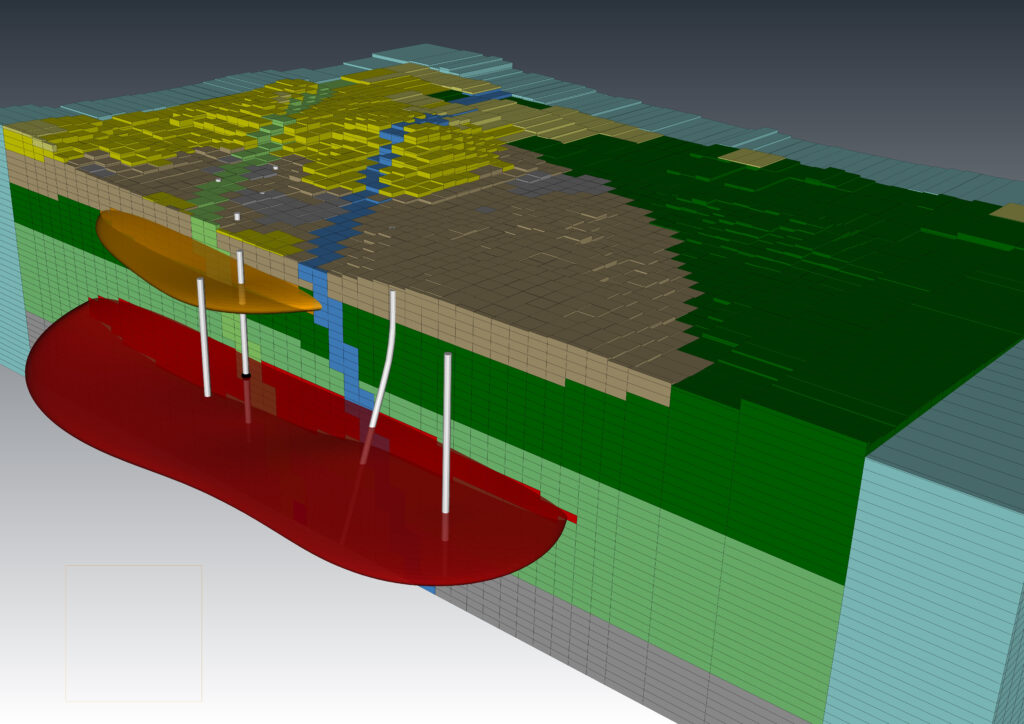
What impact does this acquisition make to your existing users?
Immediately, we can start a conversation about the operation. After all, the outcome we’re looking for is to produce cost-effective baseload electricity for the network of the country the operators are in. And so it changes the conversation – it’s now about the outcome, which is electricity.
To bring that sort of expertise together in one room – the physics of the reservoir, the understanding of the network – and being able to model that and help users evaluate how they can make that particular geothermal operation as optimal and economical as possible – that is is such an exciting idea.
We talk a lot about geothermal power generation but lately there has been a shift in focus to utilizing shallow geothermal resources for heating and other applications. How can Seequent help with those sorts of projects?
Flow State Solutions is a relatively newer and smaller company, and so they have been really focused on the high-temperature geothermal space. Now, together with Seequent, we have the opportunity to explore how that technology can eb applied to lower-temperature, heat-based geothermal projects.
We also now have the opportunity to explore existing legacy technology that Bentley has in the surface heat space. Bentley is a player in district heating, which is not largely known. That’s pretty exciting for us now to have the possibility of working with that software, and the opportunities that that creates.
Are you looking forward, perhaps, to an integration of Leapfrog with the other software tools that Bentley has?
Potentially, because now Flow State has created a bridge between us and other interesting technologies of Bentley.
I would like to go back a few months to when Leapfrog Geothermal was rebranded to Leapfrog Energy. What does this rebranding say about the shift in focus of Seequent and your changing role in the energy transition?
We recognize that the term “energy” was a more accessible brand compared to “geothermal,” which is not well-understood by many people. It tends to be understood by those inside the industry and the geothermal industry is very specialist and it’s quite small. As a positioning point, it was important for us to make more obvious what we’re about and what we’re doing.
But Leapfrog Energy is also not the same as what Leapfrog Geothermal was. We have incorporated some additional capabilities into the product that were not there before, thus expanding the product suite and offering a more advanced and capable solution.

Would you say that Leapfrog Energy is now more equipped for other applications of geothermal resources, such as carbon capture or lithium extraction?
We have been involved with some projects in lithium extraction, and have been in the early stages of investigating a couple of different carbon capture projects. We look forward to it, because those are all parts of the general energy landscape. The feedback we are getting is really strong, that what we have is a very powerful set of general capabilities that can be applied into those those situations.
Those are two great examples of why moving away from the word “geothermal” to “energy” opens up the field to other spaces that we might want to operate in like carbon capture, brines, and low-temperature applications.
In terms of “going digital,” the geothermal industry tends to focus on subsurface modeling and data visualization. What do you think are further opportunities for geothermal projects to “go digital” and what can possibly be the benefits of doing so?
The above-ground infrastructure that makes a geothermal system work, which is the conversion of steam to power, seems to me an obvious place to focus the idea of a digital twin that provides real-time feedback loops on how a facility is operating. Is it efficient? Are there issues that require predictive maintenance work? All the principles we have talked about in a general sense are directly applicable to geothermal.
Over time, what I’d like to see is the adoption of the kind of approaches Bentley has been talking about in the above-ground infrastructure scene being adopted by geothermal companies. Why? To make them more reliable, have less downtime, lower their costs, lower long-term maintenance, lower the total cost of ownership, and extend the life of the resource.
Generally, make them more economic is what we would like to do. When you’re generating electricity, it’s usually a business with a pretty thin profit margin. It’s really important that we help the geothermal operators be as efficient as they can and keep the cost base as low as we can to help the economics of the project.
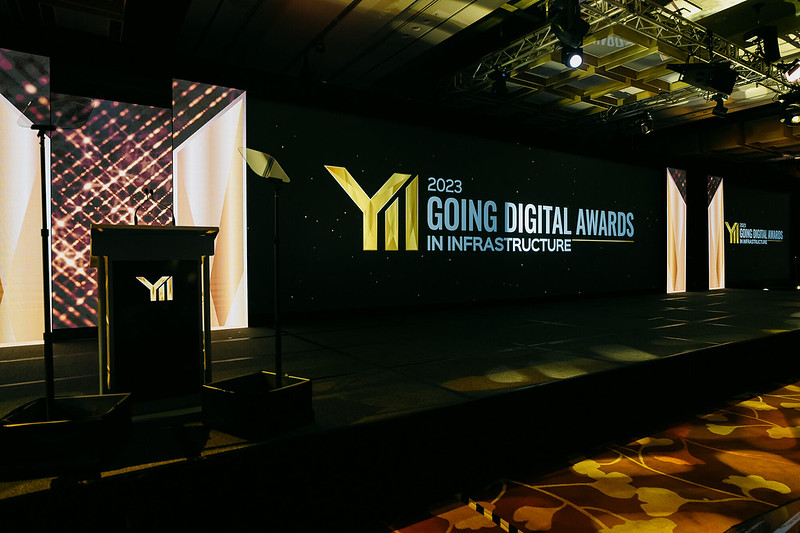
I was hoping that a geothermal project will make it the list of finalists for the Going Digital awards, but it seems this is not yet the year for that. What do think are the challenges holding back geothermal from having a more prominent role and how does Seequent help address those challenges?
I think the challenge for geothermal right now is that it is a small part of the energy industry. In the ranking of where our energy comes from, geothermal is often classified into “Others”. It’s highly specialist, and it’s not a branch or subset of any other industry – it’s its own thing.
I think the other challenge is that it’s physically located in very specific places, such Indonesia, the Philippines, New Zealand, Iceland, and the West Coast of the U.S. It’s not ubiquitous around the world, so it’s not on the it’s not front of mind for a lot of people. So then it becomes a visibility problem.
One thing we can try and do, with the global coverage and brand recognition we have, is just try and keep the flag flying for geothermal. We give it recognition amongst people and governments we speak to, and even other industries. As a technology company, giving it that degree of visibility is a contribution we can make.
I think that the subsurface data visualization that Seequent provides can help in promoting awareness and understanding of geothermal systems.
It does, because geothermal is not well-understood. It always interests me how much we get asked about geothermal even though it’s a small proportion of our business. The general public are just fascinated about where it comes from and how it works. People are interested in it, and we just have to keeping making the effort to raise its visibility.
